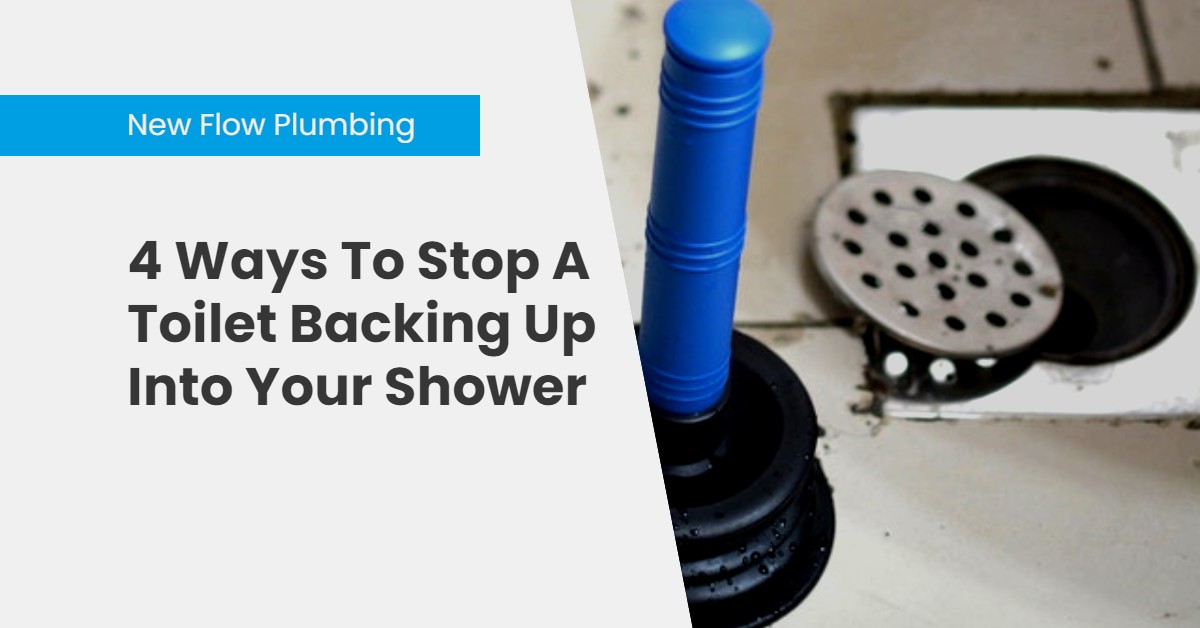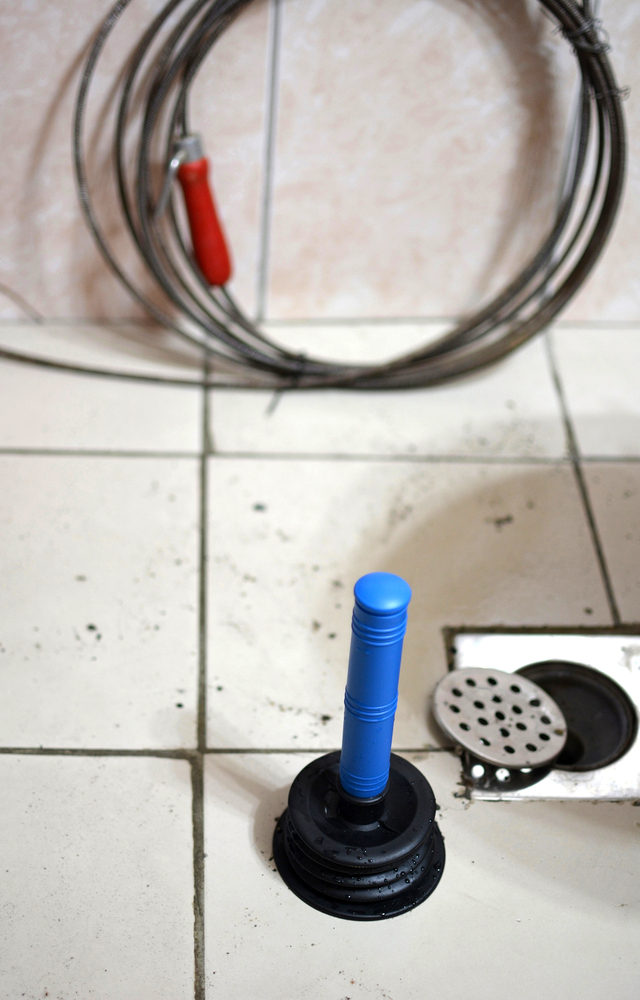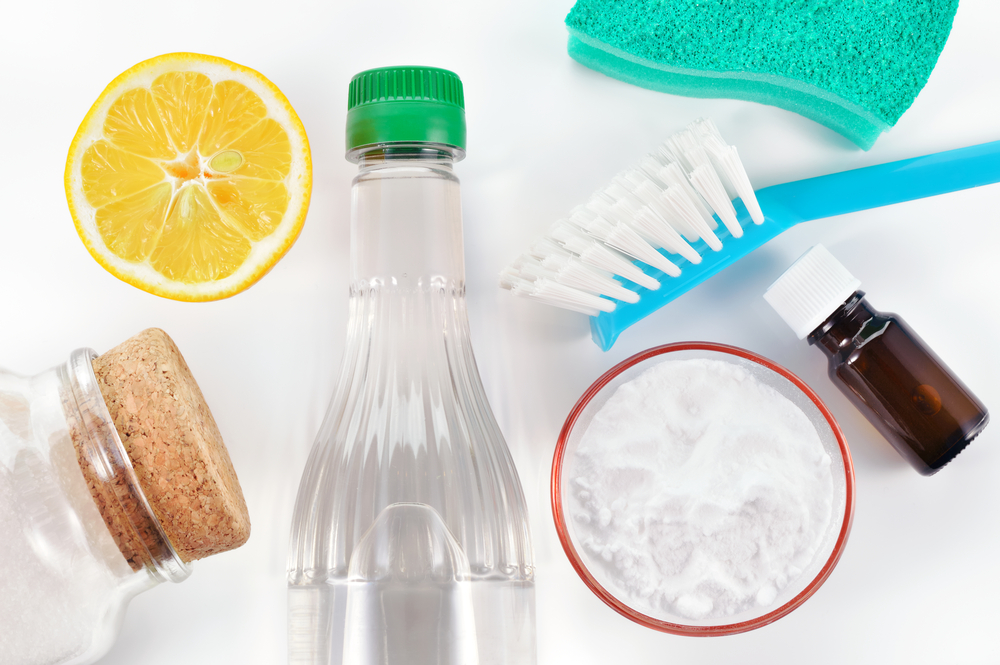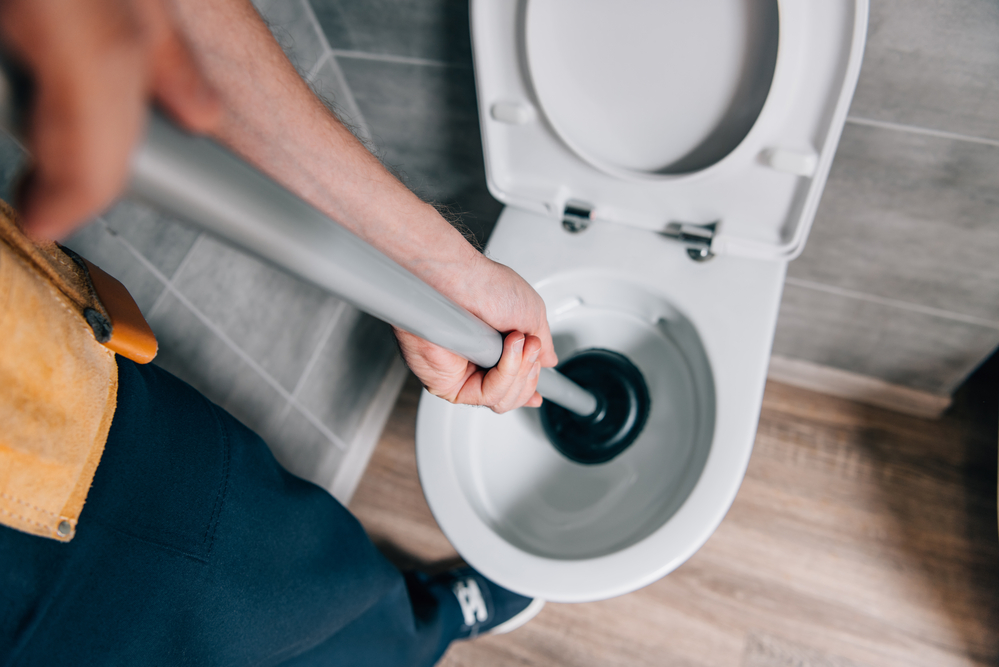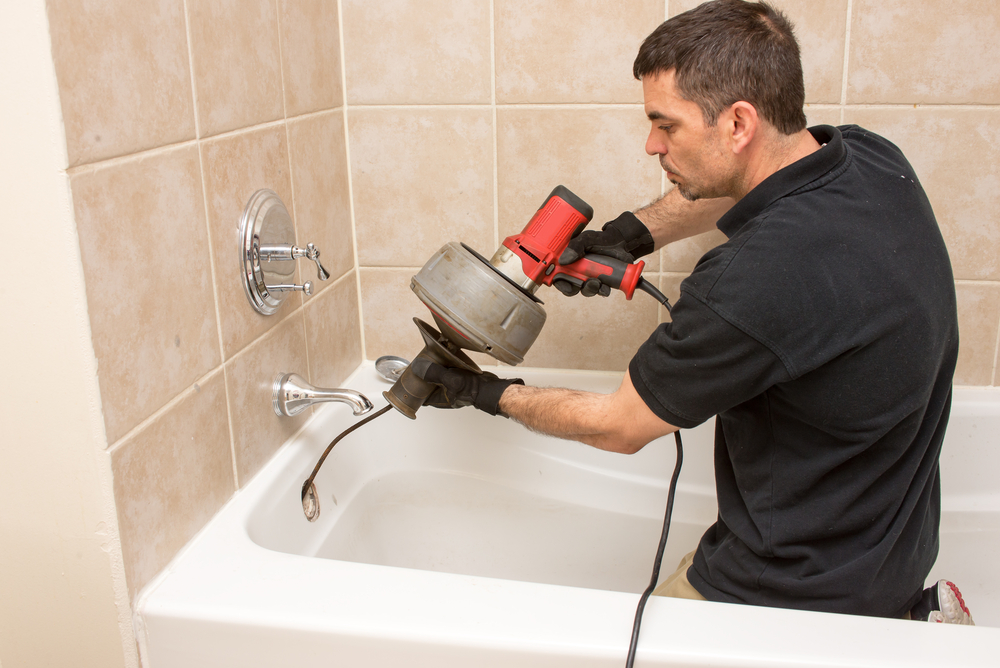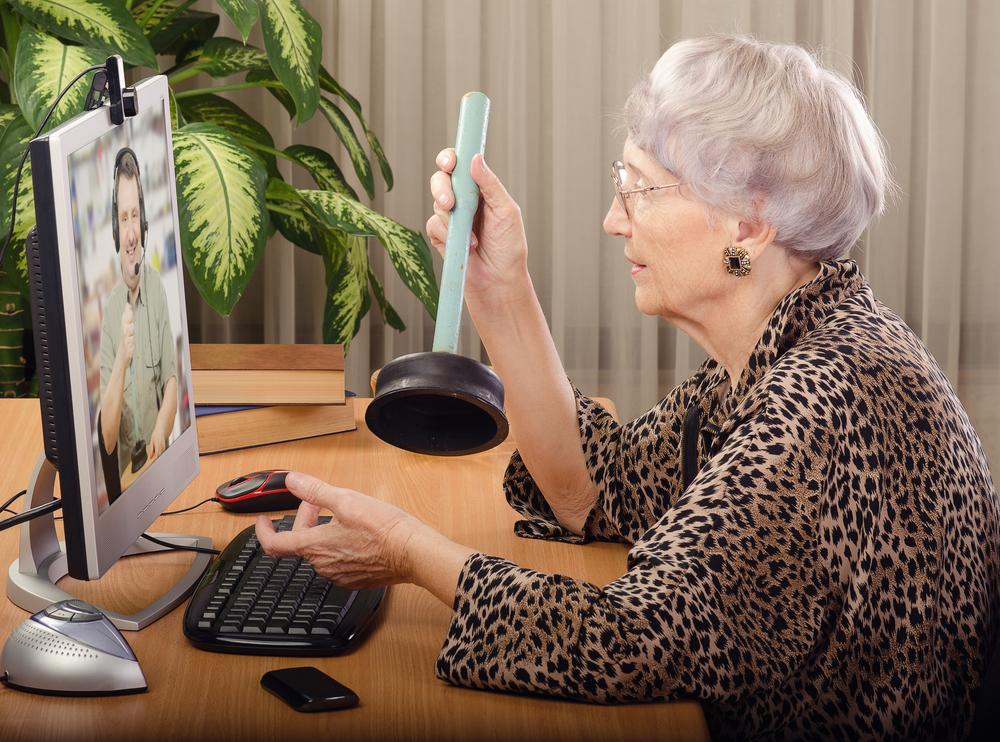4 Ways To Stop A Toilet Backing Up Into Your Shower
After a long day at work, you just came home to find your toilet backing up into your shower. Oh no! That’s not supposed to happen. Follow along. We’ve gathered the four best solutions on how to stop sewage coming out of your shower drain.
Why Your Toilet Is Backing Up Into Your Shower
After you flush your toilet, your waste travels through your pipes into the main sewer line. If water from the toilet begins backing up into your shower or tub, it’s because something is blocking the main sewer line. The waste has no choice but to find the closest drain to escape, in this case, your shower.
If your shower is the only area of concern, the main sewer line might not be the issue. The clog could be closer to your bathroom and easily fixable. If all of the fixtures in your home are backing up, then the problem is your main sewer line.
Here are some common reasons your pipes clog or fail:
Tree Roots – Tree roots can infiltrate your sewer line through joints or cracks in the pipe.
Cast Iron Pipes – Homes built before the 70s are usually made with cast iron pipes. Although cast iron is a strong material, it still rusts and corrodes over time.
Terracotta Pipes – Terracotta pipes are made out of clay-based ceramic. Contractors used terracotta pipes because the material was widely available. However, builders failed to realize that the clay is very susceptible to roots and leaks.
Soil Failure – If your soil shifts, it can induce pressure on your sewer line, causing the pipe to crack, leak, and collapse. Soil can shift due to rain, flooding, drought, freezing temperatures, and more.
Grease – Do not pour cooking oil, fats, or grease down your drains. The liquid fat hardens when it dries, sticking to your pipes.
Drain Cleaner – Most drain cleaner products contain sulfuric acid, which can ruin metal when exposed to pipes like cast iron.
Flushable Wipes – Do not flush “flushable” wipes down your toilet. Flushable only means that your toilet can flush the wipes. Toilet paper is made to disintegrate inside your sewer line, while baby wipes will remain intact, creating a clog.
You should only flush toilet paper and human waste down your toilet. But, you already have the problem, so let’s find you the right solution.
4 Ways To Stop A Toilet Backing Up Into Your Shower
Below are the best options for fixing tough clogs, from simple at-home remedies to advanced solutions that require a plumber.
1. At-home Remedies
These at-home remedies can be used on other clogged drains besides your shower.
Dish Soap & Hot Water – Take two liters (8 cups) of water and boil it in a pot. Mix a few tablespoons of dish soap into the water. Lastly, slowly pour the mixture down the sink or drain. This may take a few tries to work.
Note: Hot water works best on clogs caused by grease, fats, oil, and organic matter. It doesn’t do so well on clogs caused by hair or other substances. Avoid using this method if you have PVC pipes or porcelain sink bowls.
Wire Coat Hanger – If you don’t have a plastic drain stick, which you can find at the local store, you might have a wire hanger lying about. Straighten the hanger out but leave the hook at the end. Then use the hook to pull anything out of the drain. Once you take out as much of the clog as you can, pour some hot water and dish soap down the drain just in case.
Salt, Borax, & Vinegar – You need 1/4 cup of salt, 1/4 cup of Borax, 1/2 cup of vinegar, and a pot of boiling water. Drop them one by one into the drain ending with the hot water. Let it sit for an hour or until it clears, and rinse the drain with tap water.
Baking Soda & Vinegar – Clear the area around your sink, pour 1/2 cup of baking soda down the drain, followed by 1/2 cup of vinegar. Plug your drain and let it sit for an hour. Lastly, unplug the drain and pour hot water down until the drain is clear.
Baking Soda & Salt – Mix 1/2 cup of baking soda and 1/2 cup of salt and pour them down the drain. Let it sit from half an hour to overnight. Once it’s been given enough time, clear it with a pot of boiling water. The more challenging the clog, the longer the mix needs to sit.
Baking Soda, Salt, & Cream Of Tartar – Pour 1/2 cup baking soda, 1/2 cup salt, and two tablespoons of cream of tartar in a jar that seals. Close the jar, and shake to combine the ingredients. Pour half the jar’s contents down the drain, and save the other half for later. Follow the solution with a pot of boiling water. Let the drain sit for one hour. Then, run tap water to rinse any remaining solution down.
Baking Soda & Lemon Juice – Take 1/2 cup baking soda and 1/2 cup lemon juice and pour them one by one down the drain. Plug the drain and let it sit for one hour. Finish with a pot of boiling water.
2. The Plunger
If none of the above solutions work, it’s time to whip out the trusty plunger. The one issue with a plunger is that it can only clear clogs close to the drain surface. If the clog is deeper down the sewer line, you might as well skip this method.
3. Sewer Snake
There are several different types of snakes you can buy online or at your local hardware store.
– Manual cable drain snakes – These snakes work similar to a corkscrew. You turn the snake manually to make the opposite end of the cable drill into the clog. Then you reverse the motion to pull the clog out.
Flat tape snakes – These are smaller snakes that can fit into pipes less than 2 inches in diameter.
Power snakes – These snakes are hooked up to a motor and can clear out much tougher clogs.
Toilet closet snakes – These are designed specifically for toilet clogs and can be either manual or electric. They have extremely flexible cables capable of navigating toilet plumbing.
4. Hydro-Jetting
Hydro-Jetting is a sewer line cleaning solution that is only available through plumbers. Hydro-jetting uses a self-propelled nozzle that shoots up to 4,000 PSI of water, clearing away any debris. The pipes are accessed using a sewer line cleanout on your property. Whether you have tree roots or sludge clogging your sewer line, hydro-jetting uses specific nozzles for different obstructions. Call a professional sewer line repair company for more information. Read more about – pros & cons of hydro-jetting.
If none of these solutions work, the problem may be more than a clog. Your toilet might be backing up into your shower because the main sewer line collapsed.
If The Problem Is More Than A Clog
If your toilet is still backing up into your shower, we recommend getting a CCTV sewer camera inspection from a sewer line repair company. An inspection will be able to give you the exact location of the clog or broken pipe. Then you can choose any of the following sewer line repair solutions below.
Conventional Trenching
If a sewer pipe is extremely damaged, you will have to replace the pipe using traditional trenching methods. Traditional methods involve digging up your yard and trenching through your home. The procedures are invasive, but trenching is the only solution for collapsed, disintegrated, or back-pitched pipes.
Back-pitched pipes – A sewer line must be sloped toward the city connection, allowing gravity to move sewage down the line. If contractors installed the pipe using the wrong slope, the waste begins to flow toward your home. Trenchless technology does not work on pipes that are back-pitched.
Pipe Lining (Trenchless)
Pipe lining is a trenchless sewer repair method that can safely replace your sewer line without digging up floors. A CCTV sewer camera inspection will determine if your pipes qualify for trenchless repair methods.
The process begins when an epoxy-impregnated liner is inserted into the old pipe and inflated, creating a new pipe inside the old one. Pipe lining can be considered replacement or repair depending on whether the whole pipe length will be lined or just a section. If only a section of pipe (a spot repair) is lined, it is considered a repair. If you line the entire sewer line, it is like getting a brand new pipe installed (aka replacement).
Pipe Bursting (Trenchless)
Pipe bursting is where a new HDPE (high-density polyethylene) pipe is attached to a winch with a cone-shaped bursting head and pulled through the damaged line. The damaged pipe breaks apart as the new one takes its place, giving you a durable brand-new sewer line.
Who To Call For Help
It’s time that New Flow Plumbing comes in to save the day. We’ll get you started with a CCTV sewer camera inspection to determine where your problems come from. Then, we give you a free repair estimate, followed by available repair options. Whatever the issue, New Flow Plumbing will have your plumbing running perfectly again. Click here to see our service area in Southern California.

